Sorted by date Results 101 - 125 of 157

As a child Harry Olson tended sunflowers in his parent's garden, watching them sprout and stretch twice as big as his small frame. For more than 65 years since he's not forgotten the experience. He loved the sunny yellow blossoms and still does. But these days his affection has expanded to include a whole bouquet of new sunflowers. "Back then sunflowers were all the same," said Olson, an Oregon State University Extension master gardener. "Over the years, when I'd get seed catalogs and poke...
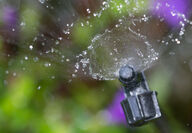
Though the first half of July was determinedly unlike summer, saving water is a keystone to responsible gardening no matter the weather. "We have a role to play in preserving our natural resources," said Amy Jo Detweiler, a horticulturist with Oregon State University Extension Service. "A water-wise garden is one of the ways to do that regardless of the amount of rainfall where you live." For instance, in the high desert around Bend where she lives, rainfall during the growing season from May...
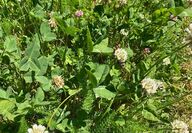
To support pollinators, people have turned to creating eco-friendly spaces around their homes, including replacing their grass lawns with flowering plants. That's no easy task, according to Carolyn Breece, Oregon State University Extension Service faculty research assistant in the OSU Honey Bee Lab. Since 2016, Breece has researched the best flowering lawn substitute. It turns out transitioning from an all-grass lawn to a flowering lawn is challenging. "The first year it was beautiful," Breece...

Fragile, beautiful, and fascinating, butterflies flutter their way into our gardens and seem to just as quickly wing their way out. It isn't because they necessarily want to leave, said Heather Stoven, an entomologist with the Oregon State University Extension Service. Rather they don't find what they need to park themselves permanently. As detailed in Extension's publication The Wildlife Garden: How to Create a Butterfly Garden, butterflies require specific room and board to have their needs...

As we settle in at the groaning table of summer's harvest, savvy gardeners pause long enough to consider the coming season. "Most folks are familiar with and love summer vegetables, but if you want to maximize your food and nutrition, then growing fall crops is a great strategy," said Weston Miller, a horticulturist with Oregon State University Extension Service. The window of opportunity for planting those crops is short – as daylight decreases, it becomes harder and harder to hit it right. S...

Even in summer when there's plenty of sustenance from plants and insects, birds welcome the variety of seeds and nuts offered in bird feeders. When putting out a banquet of supplemental food, high quality is essential, said Dana Sanchez, a wildlife specialist for Oregon State University Extension Service. Mixes with red millet, golden millet, flax seed, rape seed, and oats are a waste because birds will just kick those fillers out of the feeder, where they'll fall on the ground and attract...

As the warmer weather returns, it's a good idea to evaluate your garden for the upcoming summer. Take a lesson from the 2021 historic heat dome and be prepared to help plants through hot and dry weather as the season progresses. Here are some tips from Oregon State University Extension Service experts for preparing for heat and drought. For more, read Heat wave in the garden: how to identify and prevent heat stress in plants by Nicole Sanchez, OSU Extension horticulturist. Water your landscape...

Pests of all kinds plague plants relentlessly throughout the summer season. Many gardeners would rather not turn to chemicals as a solution. One option is soil solarization - a fancy term for a simple way to combat plant diseases, insects, and weeds when the weather warms. The method requires stretching transparent plastic sheeting over moist, tilled soil during the warmest and sunniest months of the year. As clear plastic traps the heat of the sun, it changes the soil in physical, chemical,...

Small in stature but large on looks, miniature roses can make a major presence in the garden. "They make wonderful landscape plants," said Kathrine Johnson, an Oregon State University Extension Service master gardener since 1998. "They flower big time all season long." Often wrapped in foil and sold as gifts, miniature roses grew a reputation as houseplants. In fact, she said, these diminutive plants require six hours of full sun and good air circulation, so indoor living doesn't agree with...
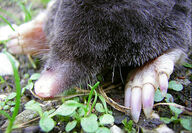
Spring brings buds and blooms, but it also brings moles, voles, and gophers. The small mammals take gardeners to their knees to peer down tunnels, set traps, and toss in everything from kitty litter to gum. They wage war against the critters before they know what they’re fighting, which can lead to frustration. “How you deal with them depends on what you have,” said Dana Sanchez, a wildlife specialist for Oregon State University’s Extension Service. “The traps are different and so are the baits...
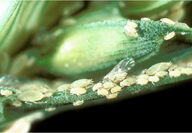
As bugs begin to munch our plants, our thoughts turn to – what else? – how to kill them. Bloodthirsty as that may sound, most gardeners don't appreciate planting a garden only to have it turn into a mottled, notched, or spotted mess. Sure, a certain amount of nibbling is to be expected and tolerated by gardeners who use integrated pest management, said Heather Stoven, a horticulturist with Oregon State University Extension Service. But dead plants are not. "Accepting a little damage is imp...

As you walk from car to doorway, ripe blueberries wait to be plucked, the fragrance of basil reminds you of the pesto planned for dinner, a small slug meets its end before snacking on the lettuce seedlings. Without knowing it, you're practicing permaculture. And as part of an effort to aid this growing movement, a free new course at Oregon State University this spring may help you learn more. "Part of permaculture is placing elements for efficient management as you move through the garden,"...

For mason bees, the wait for their first meal is a long one, six months if it's a day. There's no TV, no smart phone, not even a book to while away the time as these solitary bees hang out in their tight cocoons waiting for the cool temperatures of early spring to break them out of lethargy, to convene at the floral banquet waiting for them among the branches of fruit trees. And because honeybees and other pollinators haven't made an appearance yet, there's more sweetness for the native mason...

You've decided to go organic in the garden, but the products staring back from the nursery shelves seem as daunting as the bugs and diseases they're meant to control. What's a gardener to do? First, take some advice from Weston Miller, a horticulturist with Oregon State University Extension Service. Stop, take a breath and evaluate your garden. How bad is it? Have you really looked carefully? "With organic gardening, there are fewer options available, so going on bug patrol can be really...

When you've got a gardening question, try tapping out a local phone number for a customized answer instead of delving into the impersonal internet. One-to-one contact could mean the difference between success and failure. At the other end of the phone line in 28 counties sit Oregon State University Extension Service Master Gardeners poised to solve your gardening problems - or help keep them from happening in the first place. More than 3,000 volunteers have graduated from 66 hours of intensive t...

In the rows where your vegetables grow, good neighbors can make all the difference by helping with everything from pest control to providing windbreaks and shade. Pam Zaklan, who has been an Oregon State University Extension Service Master Gardener program since 2011, has long known the affinity of plants for each other. She came about her knowledge of companion planting through the lessons she has learned from vegetable gardening for 50 years. The more she researched, the more she understood...
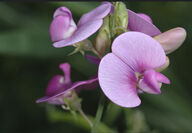
Sweet peas are a classic flower in English gardens since they were introduced in the 17th century from southern Italy and have transplanted well to all parts of the world, including climate-friendly Oregon. The first sweet peas had relatively small flowers but possessed a powerful and attractive fragrance. Sweet pea flowers naturally self-pollinate while still in bud, and it would seem that their color and perfume are there to please the gardener more than the bee. Shorter bush or dwarf varietie...
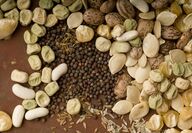
The calendar doesn’t say spring, but gardeners are ready to go. Turning vegetable seeds into plants helps satisfy the urge to put hands in the soil. It’s best to seed cool-season crops such as lettuce, cabbage, kale and broccoli in flats in late February to early March in western Oregon, said Weston Miller, a horticulturist with the Oregon State University Extension Service. Warm-season crops such as tomatoes, peppers and eggplant should be sown in late March to early April. Eastern Oregon gar...
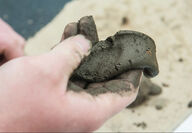
When you walk about your yard on a wet day, do your shoes stick in the mud? Could you make ceramic pots out of the soil in your garden? If the answers are yes to both, odds are you have clay soil, one of the biggest challenges for the home gardener. Clay soils in the Willamette Valley are the result of geologic actions that took place during the end of the last ice age – some 10,000-14,000 years ago, said Linda Brewer, senior faculty research assistant in Oregon State University’s College of...

It's discouraging when your lettuce bolts or you can't get your mum to bloom. There's a reason for that, and it's all about day length, which determines or how much light the plant gets. To understand plant flowering, you need to get a handle on "photoperiodism," or amount of light and darkness a plant is exposed to. The amount of uninterrupted darkness is what determines the formation of flowers on most types of plants, according to Oregon State University Extension Service horticulture...

From garden center racks and catalog pages, colorful seed packets remind gardeners it's already time to start thinking of spring. But before grabbing a handful and heading to the checkout stand, take a few minutes to read the envelope. What's on the outside of a seed packet is almost as important as what's on the inside, said Weston Miller, a horticulturist with Oregon State University Extension Service. "There's a lot of information on the seed packet, everything from how deep to plant to how...

Ignoring moisture and insect damage in the home leads to serious problems down the line. Annual inspection is essential to head them off. Whether you do it yourself or hire someone, start your inspection by checking out this article from the Oregon State University Extension Service on home moisture problems to help solve many problems you might encounter. If you plan to inspect, maintain or repair yourself, begin by taking a tour around the exterior of the house. Does water wick up the foundati...
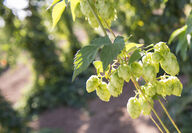
As craft beer and home brewing continue to rise, interest in growing hops ferments among home gardeners. Shaun Townsend, Oregon State University's hops breeder, said he regularly fields questions from the public about growing hops. "Typical questions are: 'How do I fertilize, water and harvest? What sort of diseases and pests do I need to monitor for? What hop varieties should I get?'" said Townsend, who answers those questions and more in OSU Extension Service's publication, Growing Hops in...
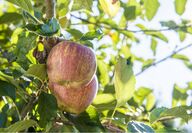
Just when you're ready for a long winter's nap, it's time to tend your fruit trees. If you don't, chances are they'll struggle in the coming season. Giving them attention now helps ward off insects and diseases, said Steve Renquist, a horticulturist for Oregon State University Extension Service who has taught hundreds of gardeners the basics of managing fruit trees. Applying dormant sprays – Superior oil, copper, and sulfur – helps control nasty pests and diseases like codling moths and app...

Fall is a time to enjoy the harvest of summer, but don't hang up your trowel and pull off your gloves just yet – September through November is the best time to plant garlic. Garlic roots develop in the fall and winter, and by early spring they can support the rapid leaf growth that is necessary to form large bulbs, said Chip Bubl, a horticulturist with Oregon State University's Extension Service. What type of garlic should you plant? Some gardeners like to grow top-setting garlic, also called h...